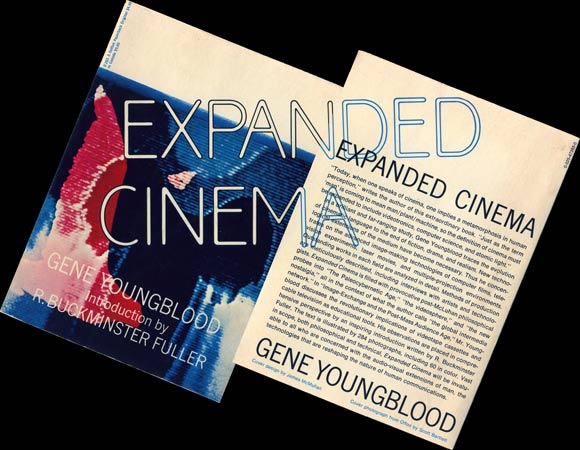Gábor Hushegyi, Zsolt Sőrés: Transart Communication: Performance & Multimedia Art Studio erté 1987-2007 (2008) [English, Slovak, Hungarian]
Filed under book | Tags: · 1980s, 1990s, 2000s, art, art history, east-central europe, hungary, multimedia, performance, performance art, slovakia

“Monografia dokumentuje dvadsaťročnú činnosť legendárneho umeleckého združenia Štúdio erté v anglickom, slovenskom a maďarskom jazyku. Skupinu založili József R. Juhász, Ilona Németh, Ottó Mészáros a Attila Simon v roku 1987 v Nových Zámkoch. Počas svojho pôsobenia sa združenie preslávilo organizovaním festivalov alternatívneho, experimentálneho a multimediálneho umenia, umením performancie, výstavnou, ale aj edičnou a edukačnou činnosťou. Aktivity zoskupenia nie je možné vnímať mimo spoločensko-politického kontextu strednej Európy v 80. a 90. rokoch minulého storočia. Práve spoločenská realita totalitného systému a menšinového geta boli príčinou ich vzniku. Činnosť skupiny v knihe priblížia texty Gábora Hushegyiho a Zsolta Sőrésa a rozsiahla obrazová dokumentácia.”
Edited by Gábor Hushegyi, József R. Juhász, Ilona Németh
Publisher Kalligram, Bratislava, 2008
ISBN 8071499757
296 pages
Transart Communication on Monoskop wiki
Jozsef R. Juhász on Monoskop wiki
performance art in Slovakia on Monoskop wiki
PDF (17 MB, updated on 2021-11-4)
Comment (0)Gene Youngblood: Expanded Cinema (1970)
Filed under book | Tags: · art, art history, computer film, computing, cybernetics, expanded cinema, experimental film, film theory, holography, intermedia, media art, multimedia, technology, television, video, video art

“The first book to consider video as an art form, was influential in establishing the field of media arts. In the book he argues that a new, expanded cinema is required for a new consciousness. He describes various types of filmmaking utilising new technology, including film special effects, computer art, video art, multi-media environments and holography.” (Wikipedia)
Part One: The Audience and the Myth of Entertainment
Part Two: Synaesthetic Cinema: The End of Drama
Part Three: Toward Cosmic Consciousness
Part Four: Cybernetic Cinema and Computer Films
Part Five: Television as a Creative Medium
Part Six: Intermedia
Part Seven: Holographic Cinema: A New World
Key words and phrases: Jordan Belson, expanded cinema, Nam June Paik, Buckminster Fuller, Stan VanDerBeek, videotronic, Ronald Nameth, Carolee Schneemann, John McHale, Expo 67, slit-scan, John Cage, light pen, Gene Youngblood, Otto Piene, Beflix, Howard Wise, KQED, Samadhi, WGBH-TV
Introduction by R. Buckminster Fuller
Publisher E.P. Dutton, New York, 1970
SBN 0525101527
432 pages
Reviews: Paul Cowen (Leonardo, 1972), Thomas Beard (Artforum, 2020), Caroline A. Jones (Artforum, 2020).
Analysis: Adam Sindre Johnson (2010, NO).
PDF (45 MB, no OCR, via Internet Archive, added on 2016-3-2)
PDF, PDF, PDF (5 MB, OCR)
PDF chapters
Alexander R. Galloway: Gaming: Essays on Algorithmic Culture (2006)
Filed under book | Tags: · algorithm, computer games, gaming, multimedia, video games, virtuality

“Video games have been a central feature of the cultural landscape for over twenty years and now rival older media like movies, television, and music in popularity and cultural influence. Yet there have been relatively few attempts to understand the video game as an independent medium. Most such efforts focus on the earliest generation of text-based adventures (Zork, for example) and have little to say about such visually and conceptually sophisticated games as Final Fantasy X, Shenmue, Grand Theft Auto, Halo, and The Sims, in which players inhabit elaborately detailed worlds and manipulate digital avatars with a vast—and in some cases, almost unlimited—array of actions and choices.
In Gaming, Alexander Galloway instead considers the video game as a distinct cultural form that demands a new and unique interpretive framework. Drawing on a wide range of disciplines, particularly critical theory and media studies, he analyzes video games as something to be played rather than as texts to be read, and traces in five concise chapters how the “algorithmic culture” created by video games intersects with theories of visuality, realism, allegory, and the avant-garde. If photographs are images and films are moving images, then, Galloway asserts, video games are best defined as actions.
Using examples from more than fifty video games, Galloway constructs a classification system of action in video games, incorporating standard elements of gameplay as well as software crashes, network lags, and the use of cheats and game hacks. In subsequent chapters, he explores the overlap between the conventions of film and video games, the political and cultural implications of gaming practices, the visual environment of video games, and the status of games as an emerging cultural form.
Together, these essays offer a new conception of gaming and, more broadly, of electronic culture as a whole, one that celebrates and does not lament the qualities of the digital age.”
Publisher University of Minnesota Press, 2006
ISBN 0816648514, 9780816648511
143 pages
Review (Kelly Boudreau), Review (Steven Conway), Review (Ted Kafala), Review (Randy Nichols), Review (Timothy Welsh)
PDF (updated on 2012-7-8)
Comment (0)
